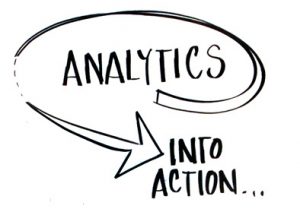I started working with a large financial services customer recently that’s implementing an enterprise-level strategic analytic application. If they’re successful, these analytics will be a game changer for this organization. Unfortunately, I can’t discuss what they’re implementing, but the analytics enable a key business strategy, and this initiative has the CEO’s attention (wow, Stat-Man comes to the rescue AGAIN!).
For this post, I will give the project the code name of “Golddust.”
The organization has a moderately high level of sophistication with analytics and predictive modeling, although the specific group that’s implementing Golddust has not traditionally used analytics in their business practices. In this case, the analytics aren’t the problem – the challenge is that the analytics are going to significantly change the standard operating procedures within their extensive field organization. Your mission, should you choose to accept it is…change management!
Think about it. How many organizations truly understand the implications of business intelligence or analytic initiatives on their organization? How many stakeholders cry success prematurely when the project is delivered according to its technical specifications? How do you ensure that your project will deliver the intended business results and achieve high user adoption? Change management.

This particular organization is so big that it actually has a change management department. I’m guessing that that’s an exception. Even with all this preparedness, they’re facing some typical challenges. Here are the top reasons I see companies struggle with around their BI and analytic initiatives:
- Too much management, not enough leadership.
- Limited support and buy-in at multiple levels within the organization.
- No guiding purpose or vision for people to rally around.
- Over-emphasis on technology implementation/success criteria.
- Business benefits are too fuzzy to articulate and communicate clearly.
- No consistent communication or messaging to stakeholders.
- Poor identification of stakeholders and influencing factors.
Fortunately, regardless of how big your organization is, there are steps you can take to work through these challenges. I recently read John Kotter’s classic, Leading Change. Mr. Kotter provides a solid roadmap for addressing these issues and recommends the following:
- Establish a sense of urgency. For the change management initiative to be successful, you must instill a sense of urgency to overcome “complacency” in the organization. Don’t underestimate how challenging it is to drive people out of their comfort zones.
- Create a guiding coalition. Create a team of champions: Leadership at the executive and front-line levels will be essential to your initiative’s success. Your coalition must be empowered to make key decisions and be your advocates throughout the organization.
- Develop a vision, purpose and strategy statement. Create a purpose statement that clearly articulates the vision for the initiative. The purpose statement should be customer-focused and easily understood at all levels of the organization. The statement will direct, align and inspire action: All project activities must be aligned to it.
- Communicate the change vision. Identify and interview key stakeholders at all levels of the organization impacted by your initiative. Develop communication plans to keep your stakeholders appraised. Understand the influence levels of the stakeholders and the need to address individual concerns.
- Empower broad-based action. Barriers can often disempower employees to participate in change. Through the communication process, encourage open feedback at all levels of the organization, identify barriers and remove where possible.
- Generate short-term wins. Often, in project planning, we focus on the technology implementation success of the initiative. At the start of the project, identify critical business success factors and monitor them continuously. Identify short-term goals, track, communicate and celebrate!
- Consolidate gains and produce more change. Many organizations lose momentum after the first quick wins. Find ways to capture and sustain desired outcomes through organizational reinforcement.
- Anchor approaches in the culture. It’s critical to find ways to embed new behaviors within the organization’s culture. Help employees understand how their behavior and attitude helps improve performance through a rewards system (does not have to be financial).
Addressing the human and organizational aspects of your business intelligence and analytic initiative will go a long way in building champions and evangalists, encouraging adoption, and helping quantify positive business outcomes. Go forth and champion change!
